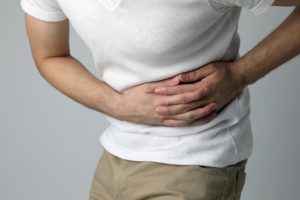
If you’ve ever gone through it, you never want to experience the pain of kidney stones again. Unfortunately, half of the people who have had kidney stones are at high risk for recurrence within five to 10 years. But is it possible to prevent a resurgence? Possibly.
There is no singular cause of kidney stones and what type, and if, you get them is influenced by a variety of factors. The most common, and arguably controllable, forms result from calcium and uric acid accumulating in the kidney.
Under normal circumstances, the minerals are flushed out in urine. But when excess minerals aren’t removed adequately, they form stones and push themselves out of the kidney in very painful fashion. The stones enter the ureters—two thin tubes that carry urine from the kidney to the bladder—where they block urine flow and cause the kidneys to swell. The result is extreme surges of pain in the back, side, and abdomen. Men also feel it in the penis.
Drinking enough fluids is often the first step in preventing calcium and uric acid kidney stones. Fluid dilutes these crystal-forming substances, so they are easily and painlessly flushed out. In order to minimize the risk, shoot for eight-glasses of water per day and monitor the color of your urine to ensure it is light yellow or clear.
Cutting back on high-sodium food is another way to thwart the risk of kidney stones. High levels of dietary sodium, like those found in processed foods, increase the calcium concentration of urine, making dilution more of a challenge. Aim to keep sodium below 2,000 milligrams per day.
Perhaps a surprising cause of kidney stones is a natural compound called oxalate. Found in many foods, including some of the healthiest in the world, oxalate is in leafy greens, broccoli, nuts, and beans. It’s also in chocolate and beer, but who’s counting?
Anyways, eating too much oxalate may increase the risk of kidney stones. To avoid this, try eating the daily RDA of calcium to minimize the risk. Oxalate binds to calcium where it is removed in stool. When it is not bound, oxalate outnumbers calcium where it can accumulate in the kidney and result in stones.
There is no magic bullet or “one-size-fits-all” all approach to kidney stones or urinary health. A number of factors, including genetics, can influence your risk. However, these tools have potential to help.